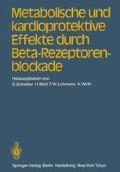Zusammenfassung
Die Insulinsekretion wird vom autonomen Nervensystem sowohl in der Peripherie als auch zentral reguliert. Beim Fasten erfolgt die Regulation vorwiegend peripher. Eine beta-adrenerge Stimulation führt zu einer gesteigerten Insulinsekretion, wobei beim Menschen vorwiegend Beta-II-Rezeptoren verantwortlich sind. Eine Stimulation der Alpha-Rezeptoren hingegen führt zu einer Hemmung der Insulinsekretion.
Zentrale Mechanismen werden über Kerne im Hypothalamus gesteuert. Eine Zerstörung des vendromedialen Anteils des Hypothalamus verursacht eine Hyperinsulinämie, die auf neuralem Wege vermittelt wird. Das parasympathische Nervensystem ist für die Entstehung dieser Hyperinsulinämie ebenfalls von Bedeutung, da sie durch Vagotonie beseitigt werden kann.
Diese Regulationsmechanismen haben klinische Bedeutung. Beim Fasten bewirkt die beta-adrenerge Stimulation eine Insulinsekretion und eine Mobilisation von Fettsäuren, was zu einem fein balancierten System leitet, bei dem Fettsäuren für Energiezwecke zugeführt werden. Bei körperlicher Belastung bewirkt eine erhöhte beta-adrenerge Stimulation eine vermehrte Bereitstellung von Fettsäuren aus dem Fettgewebe; zudem wird zusätzlich die Glukoseabgabe von der Leber in den Blutstrom durch einen verminderten inhibitorischen Effekt von Insulin ermöglicht. Eine chronische adrenerge Überstimulation, wie sie beim Phäochromozytom vorliegt, führt zum Diabetes mellitus durch Hemmung der Insulinsekretion. Die Behandlung des Diabetes mellitus mit erhaltener Insulinsekretion erfolgt am besten durch einen selektiven Beta-I-Antagonisten, der die Beta-II-Rezeptoren unbeeinflußt läßt und damit mit der körpereigenen Insulinproduktion nicht interferiert.
Access this chapter
Tax calculation will be finalised at checkout
Purchases are for personal use only
Preview
Unable to display preview. Download preview PDF.
Literatur
Ahren B, Lundquist J (1981) Effects of autonomic blockade by methylatropine and optical isomers of propranolol on plasma insulin levels in the basal state and after stimulation. Acta Physiol Scand 112:57–63.
Bereiter DA, Rohner-Jeanrenaud F, Berthoud H-R, Jeanrenaud B (1981) CNS modulation of pancreatic endocrine function. Multiple modes of expression. Diabetologia 20:417–425.
Bray GA, Inoue S, Nishizawa Y (1981) Hypothalamic obesity. The autonomic hypothesis and the lateral hypothalamus. Diabetologia 20:366–377.
Cerasi E, Luft R, Efendic S (1972) Effect of adrenergic blocking agents on insulin response to glucose infusion in man. Acta Endocrinologia 69:335–348.
Loubatieres A, Mariami MM, Sorel G, Savi L (1971) The action of β-adrenergic blocking and stimulating agents on insulin secretion. Characterization of the type of β-receptor. Diabetologia 7:127–137.
Porte D jr (1967) A receptor mechanism for the inhibition of insulin release by epinephrine in man. J Clin Invest 46:86–94.
Porte D jr, Graber AL, Kuzuya T, Williams RH (1966) The effect of epinephrine on immunoreactive insulin levels in man. J Clin Invest 45:228–236.
Pruett EDR (1970) Glucose and insulin during prolonged work stress in men living on different diets. J Appl Physiol 28:199–208.
Robinson HP, Porte D jr (1973) The glucose receptor. A defective mechanism in diabetes mellitus distinct from the β-adrenergic receptor. J Clin Invest 52:870–876.
Vecin A, Wilhelmsson C, Björntororp P (1975) Induction of diabetes and oral glucose tolerance tests during and after chronic β-blockade. Acta Med Scand (Suppl) 575:37–40.
Wilber JF, Turtle J, Crane NA (1966) Inhibition of insulin secretion by a pheochromocytoma. Lancet 11:733.
William-Olsson T, Fellenius E, Björntorp P, Smith U (1979) Differences in metabolic responses to β-adrenergic stimulation after propranolol or metoprolol administration. Acta Med Scand 205:201–206.
Editor information
Editors and Affiliations
Rights and permissions
Copyright information
© 1983 Springer-Verlag Berlin Heidelberg
About this paper
Cite this paper
Björntorp, P., Holm, G. (1983). Einfluß der β-Rezeptoren-Blockade auf die Insulinsekretion und die Glukosetoleranz. In: Schettler, G., Mörl, H., Lohmann, F.W., Wirth, A. (eds) Metabolische und kardioprotektive Effekte durch Beta-Rezeptorenblockade. Springer, Berlin, Heidelberg. https://doi.org/10.1007/978-3-642-69080-8_2
Download citation
DOI: https://doi.org/10.1007/978-3-642-69080-8_2
Publisher Name: Springer, Berlin, Heidelberg
Print ISBN: 978-3-540-12390-3
Online ISBN: 978-3-642-69080-8
eBook Packages: Springer Book Archive

